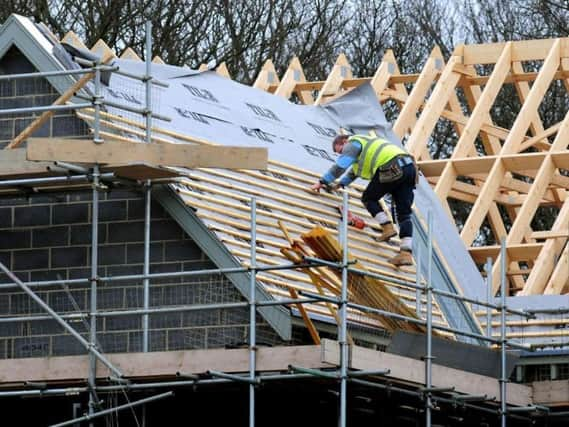Just one in 10 homes built on released Green Belt land are 'affordable', charity warns


The Campaign to Protect Rural England (CPRE) in new analysis released today, claims just one in 10 of new homes built on land released from the Green Belt in the past decade is actually affordable.
Green Belt development is not a solution to Britain’s housing crisis, report authors argue, calling for stronger evidence-based tests for planning proposals.
Advertisement
Hide AdAdvertisement
Hide Ad“Building homes on the Green Belt is not the answer to the housing crisis,” said Tom Fyans, deputy chief executive for the countryside charity. “Indeed, in terms of the Green Belt, it’s clear that we are reaching a tipping point.
“We must not allow our Green Belt to be gobbled up, but instead focus on building affordable homes in which young struggling families can actually live.”
Analysis for Yorkshire and the Humber within CPRE’s Space to Breath report is limited, restricted to parts of South and West Yorkshire for which figures were submitted.
They show that of Green Belt homes approved for planning since 2015/16, 23 per cent were affordable. But when it came to those actually built, that figure dropped to just 12 per cent.
Impact
Advertisement
Hide AdAdvertisement
Hide AdRebecca Pullinger, report author, told The Yorkshire Post this was indicative of what was seen across the country, with developers often renegotiating under viability rules once approval is granted.
The impact of shortfalls in affordable housing, she warned, was on families within rural areas struggling to stay within the villages they were raised, and on more urban communities losing their boundary green spaces.
“We know that the housing crisis is not always about numbers as a whole but about affordability,” said Ms Pullinger. “It’s about making sure that young families, or older people downsizing, can afford to stay within their own villages and communities.
“Without this, it can mean local services, such as primary schools and Post Offices, close. It can mean communities no longer thriving. It can have a devastating affect on communities.”
Advertisement
Hide AdAdvertisement
Hide AdThe thorny issue over Green Belt development has proved controversial across the region, with the ongoing campaign over York’s Askham Bog, described by Sir David Attenborough as a ‘cathedral of nature conservation’, now set to go to a planning inquiry.
Outline plans had been refused for up to 516 residential units nearby, after more than 7,000 people backed a campaign from the Yorkshire Wildlife Trust, but developers have appealed the decision and an inquiry is set to begin next month.
Campaign call
Development on the Green Belt is “inefficient and land hungry”, the CPRE argues, with the average density of homes within the Green Belt just 14 dwellings per hectare, compared to an average of 31 outside these designated green areas.
“The countryside around our urban areas provide a huge opportunity to help us in our efforts to address the climate emergency and biodiversity crisis, while supporting the improved health and well-being of everyone,” added Mr Fyans.
Advertisement
Hide AdAdvertisement
Hide Ad“Better ways to tackle the housing crisis exist, such as a ‘brownfield first’ policy. Our research shows that there is enough brownfield land to make way for more than a million homes.”
A spokesman for the Ministry of Housing, Communities and Local Government (MHCLG) dismissed the report as “misleading” as the full brief includes projections for the future based on Local Plans.
“Ministers have said repeatedly that building the homes our country needs does not mean damaging our countryside,” they said, arguing that the Green Belt is now larger than in 1997.
“Last year only 0.02 per cent of the Green Belt was developed for residential use and often this development is around road and rail infrastructure in place long before Green Belt designation.”